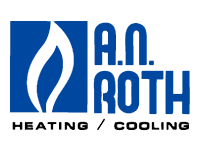Case Study: Gogi 1055
Nothing is worse than leaving a restaurant smelling like food. Most of the time, smoke, heat, and intense smells are concentrated near the kitchen. But what if customers cook the food themselves, and cooking stations are scattered throughout the restaurant?
Gogi 1055, a new Korean-inspired restaurant on Bardstown Road, faced this challenge. Like many authentic Korean barbecue restaurants, Gogi 1055 customers cook their order on an individual gas grill. With a cooking unit at every one of the 31 tables, the potential for an uncomfortable dining room increases significantly. A.N. Roth is known for creative solutions to unusual problems, so general contractor for Gogi 1055, Kiel Thomson Company, enlisted our help to tackle this dilemma.
We knew we needed a powerful and customizable kitchen ventilation system, so we turned to CaptiveAire. CaptiveAire is the premiere kitchen ventilation equipment provider. Unlike companies that may produce only hoods or exhaust fans, CaptiveAire uniquely manufactures every component comprising their kitchen ventilation system. This gives them the edge in performance because every piece of equipment is designed to work together. With CaptiveAire on our team, we began work on Gogi 1055.
Part One: Removing Air
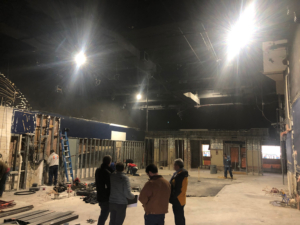
Gogi’s high ceilings were part of why we couldn’t put ventilation over the tables.
Typically, restaurant kitchens have a hood situated directly above the chef’s cooking space, removing the smoke, grease, and heat coming off of the grill or stove. Similar in concept, in Korean barbecue restaurants, each table typically has a small hood extending from the ceiling.
In Gogi’s case, this wouldn’t work for two reasons. The first and most important reason is permitting. If the equipment isn’t UL listed it presents a permitting problem.
The second reason is that Gogi’s dining room has very high ceilings. For aesthetic and logistic reasons, Gogi’s owners elected to forgo hoods. Instead, they selected small downdraft cooktops for each of the tables.
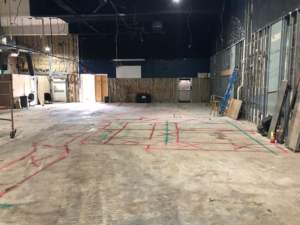
CaptiveAire helped us map out all of Gogi’s underground ductwork, which we then marked on the floor.
With the grease, smoke, and heat being pulled directly down, the ductwork needed to be underground instead of overhead, and it needed to be made of specific materials: 18 gauge stainless steel or welded black iron encased in concrete. With a complex project like this one, we would either need all of the ductwork custom-made or use a company that makes prefabricated ductwork.
This led us naturally to CaptiveAire because they manufacture all of the ductwork associated with kitchen ventilation. Their local services help layout complex ductwork systems and make sure that all of the correct parts and pieces are ordered.
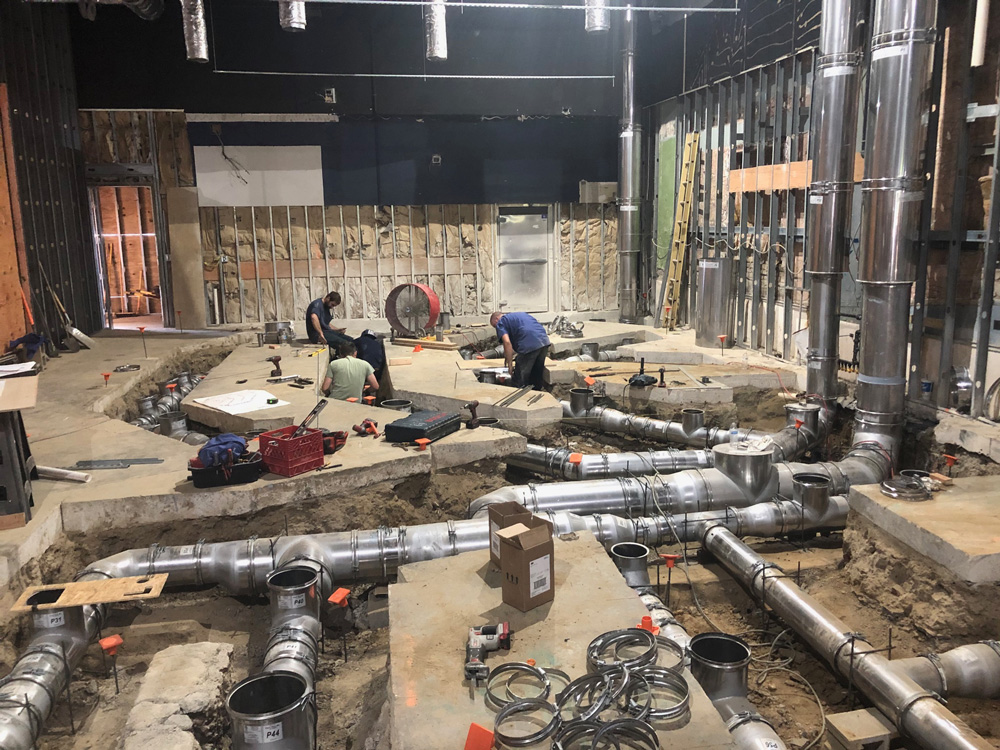
Laying the ductwork for 31 tables was no easy task. Attention to detail and great organization is vital in a project like this one.
Part Two: Replacing Air
Once the air is removed from the restaurant, that air needs to be replaced. This is called make-up air. Typically, make-up air is delivered at the same point where it was removed, usually right in front of the hood. In Gogi’s case, that would mean blowing make-up air directly up from the dining table, which wouldn’t be comfortable for guests. We needed to get creative.
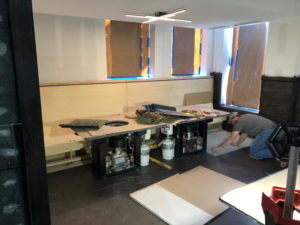
In this photo, you can see how the downdraft cooktops connect to the rest of the ductwork.
CaptiveAire makes what’s called a Dedicated Outdoor Air System, or DOAS. Two DOAS machines on the roof of Gogi support four fan sections, each of which vents a section of cooktops. When a fan section is turned on, fresh air is pulled from outside the restaurant to make-up the air that’s being removed.
That fresh air is then filtered and either heated or cooled and dehumidified depending on the time of year. Properly treating that air ensures that the dining room stays perfectly comfortable, no matter how many or how few cooktops are being utilized at the time. This has the added benefit of ensuring that restaurant patrons will never leave the restaurant smelling like food!
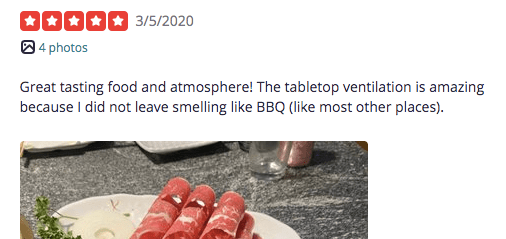

Right now, COVID-19 prevents much in-restaurant dining in Louisville, but Gogi’s CaptiveAire ventilation system makes it one of the safest places to be. In a normal room, airborne germs have the potential to travel depending on the direction and flow of the HVAC system. In Gogi, respiratory droplets are immediately drawn down the vent and replaced with fresh outside air, and not given the chance to recirculate. When all of the fan sections are on, 100% of the air in the Gogi is fresh, filtered outdoor air.

The downdraft cooktops allowed Gogi to maintain the open sightline of the dining room.
The Results
The HVAC portion of the Gogi 1055 project took nearly 4 months to complete. Thankfully, even with our special needs and custom ductwork, CaptiveAire operates on a quick six-week lead time. We worked closely with their local service providers throughout the project to ensure everything went smoothly. Local service is also great for the restaurant owner, as utilizing CaptiveAire for maintenance extends the life of the system and its parts warranty.

Ready to BBQ!
CaptiveAire doesn’t just design pieces of equipment or components; they design systems. Of course, any HVAC system is only as good as its installation, but an expertly installed and regularly serviced CaptiveAire system is guaranteed to be one of the most robust, efficient, and long-lasting kitchen ventilation systems available. If you’re in need of a kitchen ventilation system, our friendly staff members are happy to provide you with a detailed, no-obligation proposal. Call 502-584-8503 or CONTACT US today.
